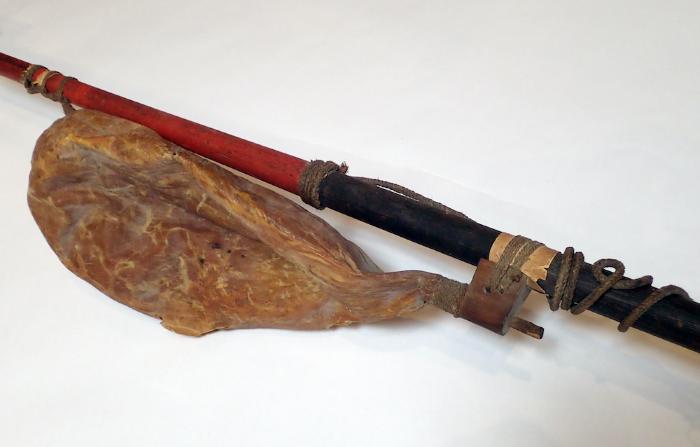Seal Float, Buoy — Pugtaqutaq

The Alutiiq word pugtaqutaq refers to a float, an object that provides buoyancy. Today, Alutiiq speakers use the term for marine buoys, life preservers, floatplane pontoons, or even the corks that line the top edge of a fishnet. In the past, however, pugtaqutaq referred to a float made from seal parts. The Alutiiq made and used two kinds of these floats.
From seal stomachs, Alutiiq craftsmen made small floats for harpoons. Each float had a wooden plug lashed to one end that kept air inside. A hunter tied the plugged float to his harpoon shaft, essentially adding a balloon to the assembly. When he struck an animal, a cord tied between harpoon point and shaft kept the two together. As the wounded animal swan away, it pulled the shaft through the water. The seal stomach float acted as a drag. It tired the wounded animal. It was important not to fill the float too full of air, as it might glide over the surface of the water. A partially inflated float sunk a bit and provide more resistance.
Alutiiq people made larger floats from the skins of small seals. Each float was a nearly complete skin, inflated with air through a wooden stopper. Paddlers stored these floats inside or on the decks of their kayaks. When towing a carcass home, a hunter might tie a seal float to his catch to keep it from sinking. If a kayak swamped a seal float could keep the boat from sinking or act as a personal flotation device for the unfortunate paddler.
